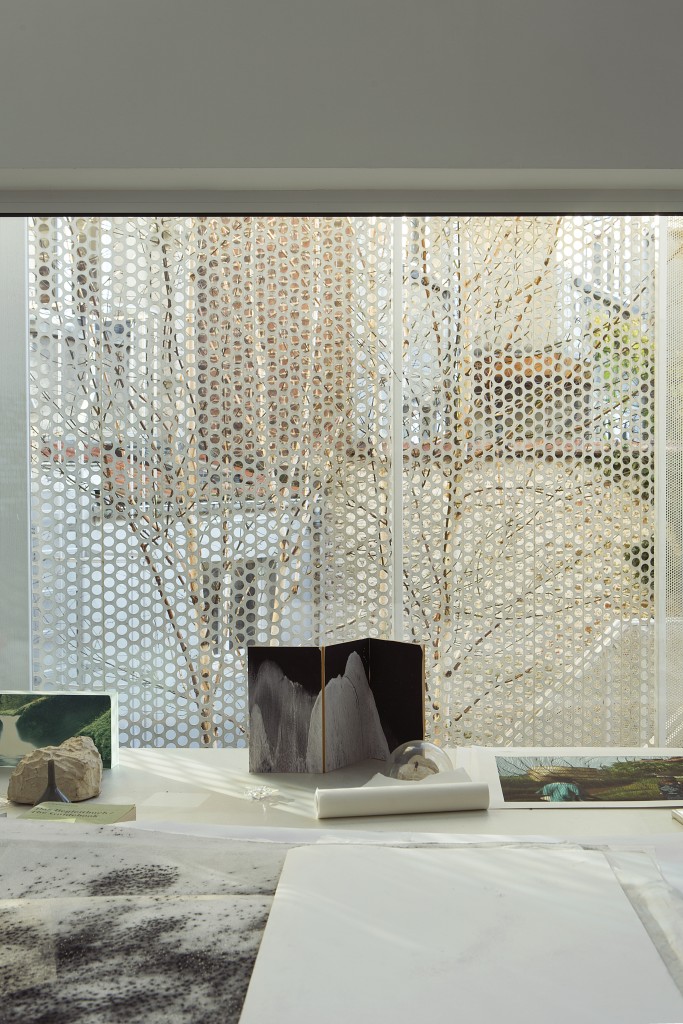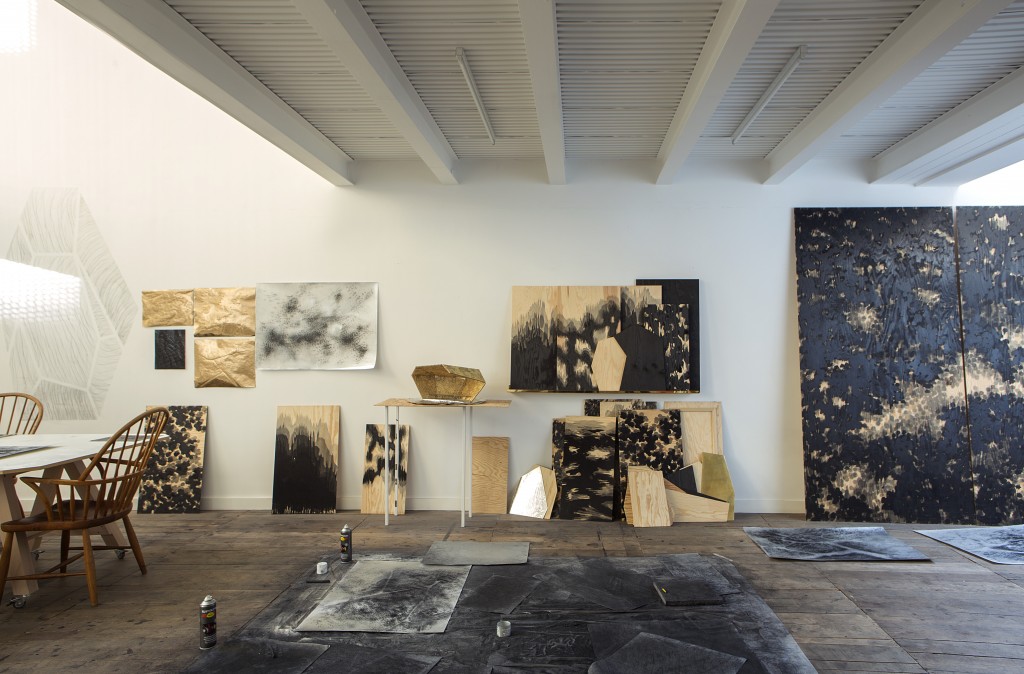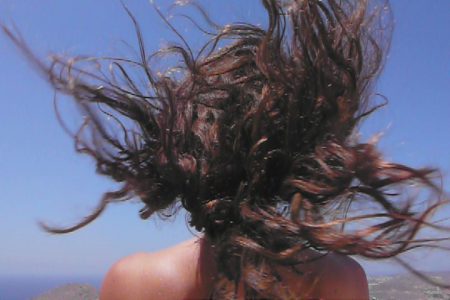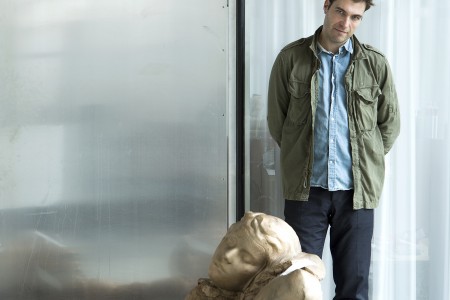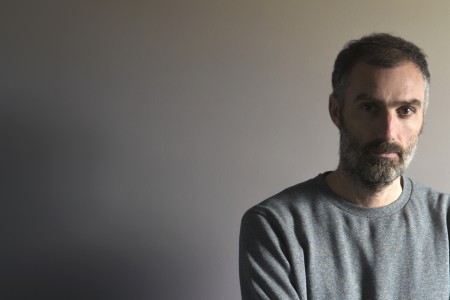Art Studios Belgium III – Sophie Whettnall
Sophie Whettnall uses her own body to measure out the abstract lines. She calls these works “mental structures.” Let’s pay a visit to her atelier in Brussels
Sophie Whettnall (b. 1973) lives in Saint-Gilles and works in Ixelles. “I used to live on the mezzanine above my studio. But the work never stopped. It became completely untenable when I had children. Now that I’ve separated my work from my family life, I feel much more focused. If necessary, I return to my studio in the evening after dinner to work some more in peace and quiet.” Although Whettnall’s studio is situated along a busy street in Ixelles, you don’t notice the city at all once you are inside. The second-line building was originally a factory for horse-drawn caravans. It then became the headquarters of the World Wildlife Fund (WWF) in Brussels. The Brussels architect Pierre Lhoas, a friend Whettnall had met several years prior, transformed both her studio and house. Lhoas opened up the studio building and turned it into a bright, large space with a central kitchen. “The furniture was actually part of a bathroom that Pierre had demolished on another project. He adapted the furniture and used it for the kitchen.”
“Pierre understood all too well that light and shadow are the most important intangible materials in my work. You notice that immediately in my studio.” Light cascades in beautifully through the back of the building where Pierre Lhoas used solar blinds with playful perforations. Light also shimmers in through drilled plywood panels at the front of the building, one of Sophie’s pieces. “The plywood was painted black and then hand-drilled from the back. When it’s backlit, it resembles a starry sky,” says Whettnall. The panels are riddled with mini holes in different thicknesses. Together, they form an intricate, lace-like pattern of light. Her Drilling for Light series is poetic, delicate and feminine. But the act of perforation also implies a certain physical aggression. The plywood panels and scale models have been perforated with surgical precision until they become very fragile. This willpower and physicality is typical of Whettnall’s work. Every one of her sculptures, videos, installations and drawings implies a physical action, a performance almost. The same principle applies to her wall drawings, which she makes in situ. Whettnall uses her own body to measure out the abstract lines. She calls these works “mental structures.” But they also resemble longitudinal lines on a map, like the intuitive tracings of a landscape.
Nature and music are very important for Sophie in her life as in her work. “There is almost always classical music playing in my studio, whether it’s Bach, Mussorgsky or Kurtág. I was raised with it. Artists gave regular living room concerts at my parents’ house for a select audience. I don’t have any musical talent myself but I use music as a starting point for almost all of my pieces.” She also cites the tension between nature and architecture as another important element in her work. The interactions between the two are visible in the semi-abstract minerals and crystals she sometimes draws. The same goes for her imaginary series, Self-portrait as a volcano. This tension is likewise present in one of her earlier sculptures, white foam rocks that you can on. Sophie’s house, which she shares with her husband Michel and their children, is an effortless mix of vintage furniture, heirlooms and contemporary art. She has also incorporated some of her own pieces around the house. However, she mainly owns art by friends like Walter Swennen, Damien De Lepeleire and Michel François. “At home, I can really think about my work. I go to my studio in order to physically work on it. I proceed freely and intuitively but also with a lot of accuracy and discipline. That’s how I prefer to work.”
